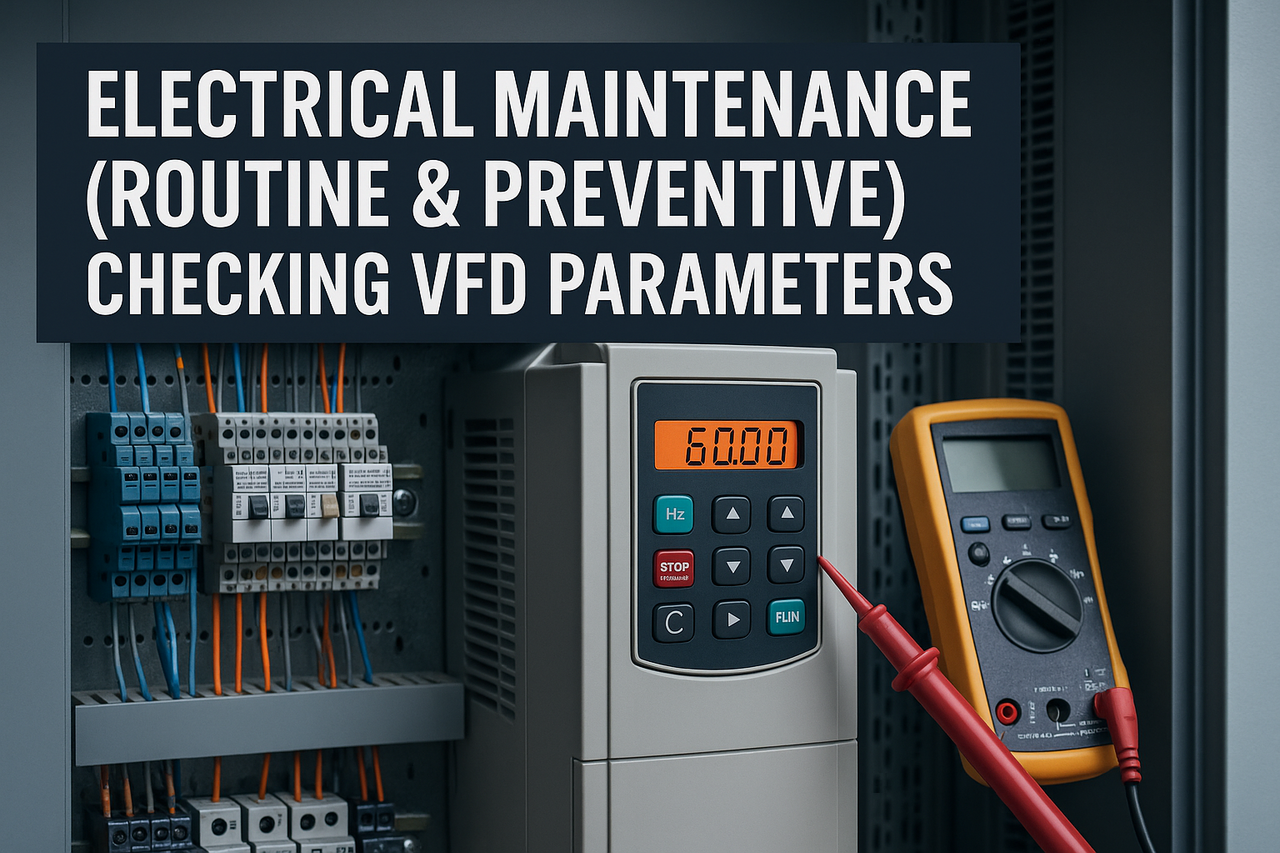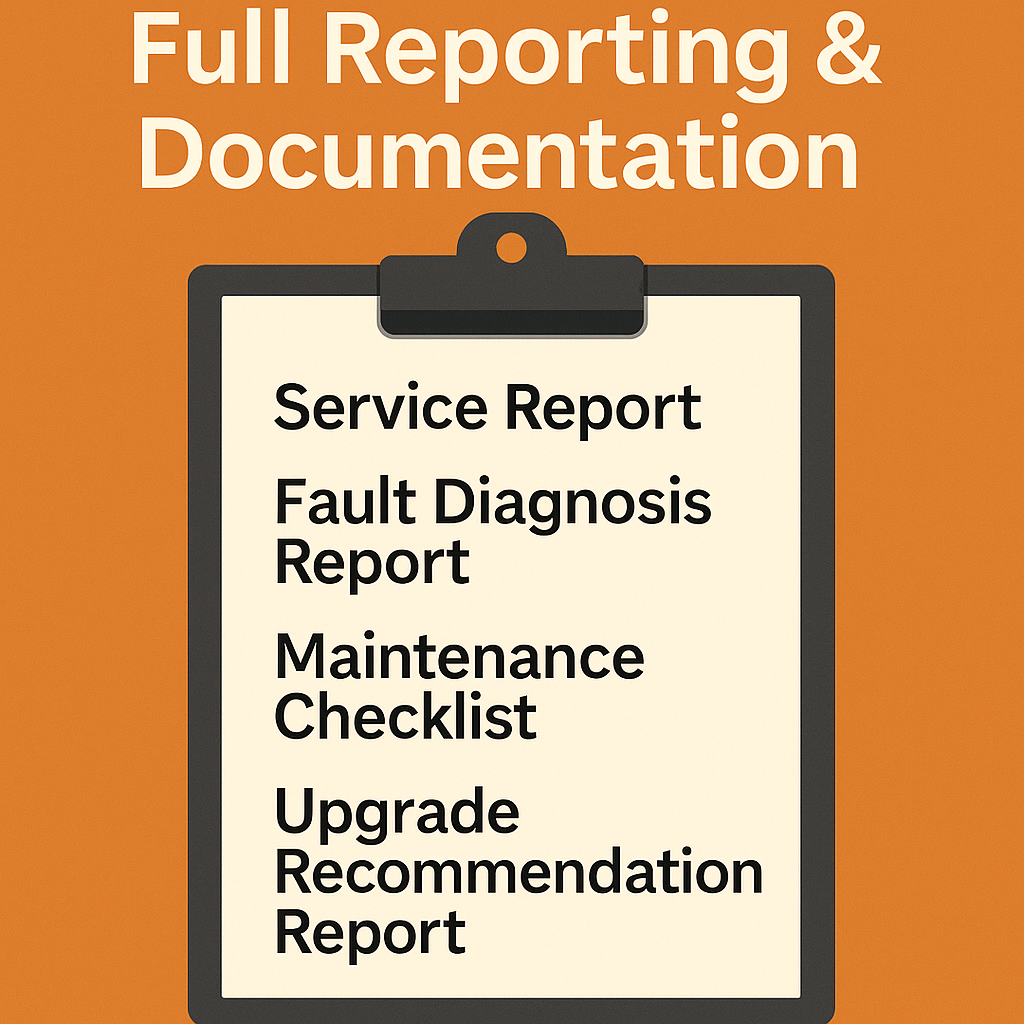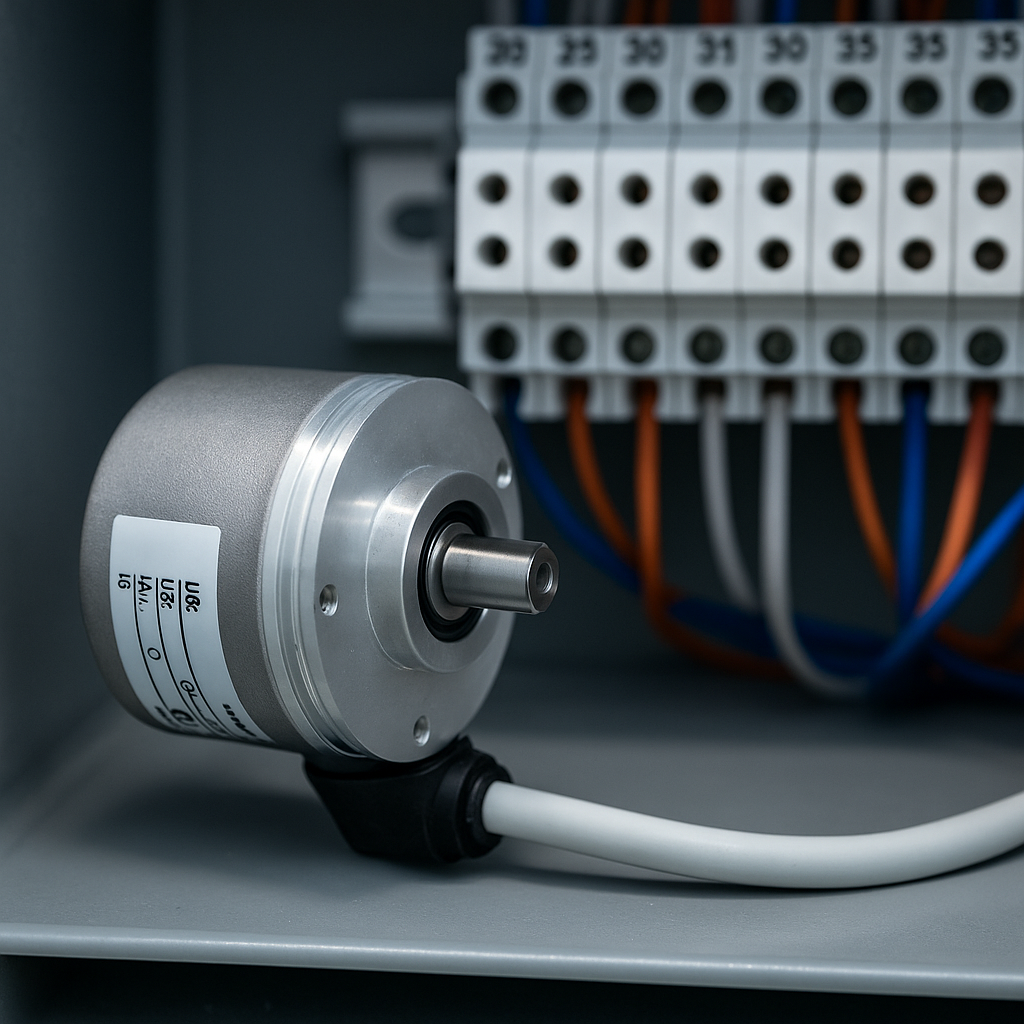
Posted on Tuesday, November 18, 2025
Variable Frequency Drives (VFDs) control the speed, torque, and acceleration of motors in roll forming machines. Whether driving the main forming line, feeding systems, hydraulic pumps, conveyors, or flying saws, the VFD is one of the most important electrical components in the machine.
When VFD parameters drift, are incorrectly set, or are overwritten during servicing, the machine can experience:
Wrong line speed
Incorrect cut length
Punch/shear timing errors
Overcurrent/undervoltage trips
Motor overheating
Loss of torque under heavy load
Flying saw crashing or drifting
Random stoppages
Excessive scrap
Slow production
Routine (and especially preventive) maintenance must include verifying, adjusting, and backing up all VFD parameters.
This guide explains why VFD parameters matter, how they drift, the critical parameters to check, and how Machine Matcher technicians perform full VFD parameter audits worldwide.
VFDs are responsible for:
Controlling line speed
Regulating motor torque
Synchronizing operations
Maintaining stable motion
Protecting motors from damage
Ensuring accurate cutting and punching
Managing acceleration & deceleration
Incorrect parameters cause instability that spreads across the entire machine.
Inconsistent length outputs
Motor stalls
VFD tripping during heavy load
Punch/shear timing drifting
Sudden speed jumps
Overheating of motors or drives
Machine unable to reach full speed
Misalignment between servo/flying saw & line speed
In short: VFD settings = production accuracy.
Even if a machine was perfectly tuned at the factory, parameters can drift due to:
Brownouts, surges, or frequency changes can corrupt parameter memory.
High distortion can cause resets or memory faults.
Operators may alter settings without understanding the effects.
A large fault can reset a VFD to factory defaults.
A failing VFD can revert to default settings.
New drives often ship with default parameters that must be configured manually.
Changing roller diameter, gearbox, or encoder requires re-tuning.
Below is the Machine Matcher standard VFD audit.
These must match EXACTLY:
One mismatch can cause overheating or low torque.
Incorrect settings cause:
Jerky startup
Chain stretching
Premature gearbox wear
Flying saw sync issues
Machine Matcher typically uses:
2–4 seconds accel
2–4 seconds decel
(Depends on machine size and inertia.)
Essential for forming thicker materials.
Too low → motor stalls
Too high → damage to tooling or gearbox
We adjust:
Torque limits
Stall prevention
Current limits
Low-speed torque boost
Includes:
Max/min frequency
Analog input scaling (0–10V or 4–20mA)
Digital speed commands
PID control (if used)
Speed reference filtering
Incorrect scaling = wrong line speed.
Flying saw + heavy material requires correct braking.
We check:
Dynamic braking
DC injection
Ramp profile
Braking resistor settings
Bad braking → saw misalignment, overshoot, blade damage.
VFD protection is critical for motor life.
Machine Matcher checks:
Overcurrent level
Undervoltage level
Overvoltage level
Stall detection
Motor temperature model
Short-circuit and ground fault protection
Wrong protection = expensive motor failure.
Lower carrier frequency:
Reduces heat
Increases motor noise
Higher carrier frequency:
Smoother motion
Higher drive heat
We tune this depending on drive size and cabinet cooling.
When the flying saw uses a VFD instead of a servo, we verify:
Sync frequency reference
Encoder ratio
Position offset
Linear acceleration tuning
Saw return speed
Incorrect tuning can cause saw crashes.
Used for:
Decoilers
Feeding lines
Pre-cut machines
Exit conveyors
Parameters must be aligned with PLC logic.
The more symptoms you see, the more urgent the need.
Check fault history
Inspect fan and heat sinks
Monitor running temperature
Verify speed scaling
Verify torque limits
Check accel/decel ramps
Inspect motor load trends
Validate all motor nameplate settings
Check braking parameters
Review noise/harmonic performance
Full VFD parameter audit
Create parameter backup
Clean cabinet cooling system
Inspect for electrical noise interference
Update documentation
Our global technicians follow a structured method:
(VFD, HMI, PLC integration)
We maintain internal settings for most machine types.
Amperage, torque load, thermal behavior.
Digitally & in printed form.
This ensures your VFD runs at peak efficiency with verified safety margins.
We offer:
VFD parameter audits
VFD replacement support
Motor tuning
Flying saw VFD synchronization
Torque and current calibration
Harmonics analysis
Panel ventilation upgrades
24/7 remote support
Global on-site technicians
Every service includes a VFD Parameter Report listing all settings before and after the audit.
VFD parameters determine how smoothly, accurately, and safely your roll forming machine operates. Incorrect settings lead to overheating, lost torque, inaccurate cut lengths, flying saw problems, and unnecessary downtime.
Routine and preventive VFD parameter checks are essential for maintaining production stability and extending the life of your motors and drives.
Machine Matcher provides the complete VFD maintenance solution for factories worldwide.
Correct parameters. Correct performance.
Machine Matcher delivers it.
Machine Matcher now offers full electrical technician services for roll forming machines — including diagnostics, rewiring, testing, encoder calibration, PLC programming, electrical audits, and preventive maintenance.
We support all machine types and all global regions.
Contact us today for immediate technical assistance or to schedule a full electrical inspection at your factory.
Looking for the right roll forming machine or expert guidance on your next project? Machine Matcher is here to help. Our global team provides 24/7 technical support, expert advice, and guidance on machine selection, setup, and maintenance—ensuring your operations run smoothly from day one.
With team members based worldwide—including the UK, USA, Middle East, and beyond—we are equipped to assist buyers across the globe. Whether you’re sourcing a single machine or upgrading an entire production line, our experts are ready to provide tailored solutions and support every step of the way.
Get in touch now and let Machine Matcher help you find the perfect roll forming machine for your business.
United Kingdom (Main Office)
Phone: +44 20 335 56554
United States
Phone: +1 407 559 7948
Mobile / WhatsApp: +44 7816 972935
Email: [email protected]

Posted on Wednesday, November 19, 2025
How to Protect Your Line, Your Operators, and Your Investment in Every Region of the World

Full Reporting & Documentation for Roll Forming Machines
Posted on Tuesday, November 18, 2025
Service Reports, Fault Diagnosis Reports, Maintenance Checklists & Upgrade Recommendation Reports Guide

Electrical Maintenance (Routine & Preventive): Sensor Alignment on Roll Forming Machines Guide
Posted on Tuesday, November 18, 2025
How Proper Sensor Alignment Prevents Misreads, Machine Stops & Costly Production Errors

Electrical Maintenance (Routine & Preventive): Encoder Recalibration for Roll Forming Machines Guide
Posted on Tuesday, November 18, 2025
How Proper Encoder Calibration Protects Cut Accuracy, Flying Saw Synchronisation & Production Speed
Copyright 2025 © Machine Matcher.